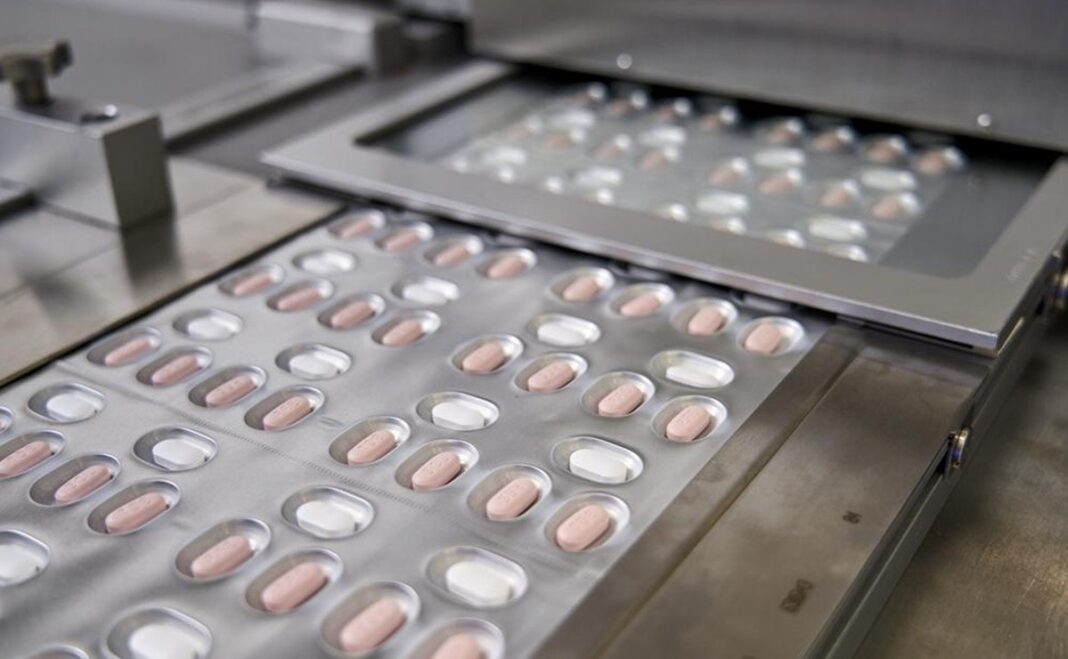Pfizer Inc on Tuesday said final analysis of its antiviral COVID-19 pill still showed near 90% efficacy in preventing hospitalizations and deaths in high-risk patients, and recent lab data suggests the drug retains its effectiveness against the fast spreading Omicron variant of the coronavirus.
The U.S. drugmaker last month said the oral medicine was around 89% effective in preventing hospitalizations or deaths when compared to placebo based on interim results in around 1,200 people. The data disclosed on Tuesday includes an additional 1,000 people.
Nobody in the trial who received the Pfizer treatment died, compared with 12 deaths among placebo recipients.
The Pfizer pills are taken with the older antiviral ritonavir every 12 hours for five days beginning shortly after onset of symptoms. If authorized, the treatment will be sold as Paxlovid.
Pfizer also released early data from a second clinical trial showing that the treatment reduced hospitalizations by around 70% in around 600 standard-risk adults.
“It’s a stunning outcome,” Pfizer Chief Scientific Officer Mikael Dolsten said in an interview.
“We’re talking about a staggering number of lives saved and hospitalizations prevented. And of course, if you deploy this quickly after infection, we are likely to reduce transmission dramatically,” Dolsten said.
Dolsten said he expects authorization for use in high-risk individuals from the U.S. Food and Drug Administration and other regulatory agencies soon. He does not believe an FDA advisory panel meeting will be needed.
“We’re in very advanced regulatory dialogues with both Europe and the UK, and we have dialogues with most of the major regulatory agencies globally,” Dolsten said.
The efficacy of Pfizer’s pill in preventing hospitalizations and deaths in at-risk patients was widely expected, so the FDA’s decision could come within a matter of weeks, if not days, said Zarina Saidova, an analyst at Moscow-based Finam Holdings.
Saidova expects Paxlovid to generate $15 billion to $20 billion in revenue next year, a significant boost for the company in the face of a potential decline in vaccine sales.
There are currently no oral antiviral treatments for COVID-9 authorized in the United States.
Rival Merck & Co has asked for emergency use authorization of its antiviral pill molnupiravir. But that drug only reduced hospitalizations and deaths in its clinical trial of high-risk patients by around 30%.
Some scientists have also raised safety concerns about the potential for birth defects from the Merck drug, as well as worries that it could cause the virus to mutate.
Pfizer’s drug works differently. It is part of a class of drugs called protease inhibitors currently used to treat HIV, hepatitis C and other viruses.
Pfizer shares fell 0.8% to $54.75 in trading before the bell, while Merck shares were flat at $72.69
Dolsten said recent laboratory testing showed that activity against the protease of the Omicron variant is as “good as basically any SARS-COV-2 variant of concern.”
The company has said it can have 180,000 treatment courses ready to ship this year and plans to produce at least 80 million more in 2022.
Dolsten said Pfizer is looking to expand that output further as new variants, like the newly-discovered Omicron, could push the need for antivirals substantially higher. Current vaccines appear to be less effective at preventing infection with Omicron.
Pfizer, which makes one of the leading COVID-19 vaccines with German partner BioNTech, has agreed to allow generic manufacturers to supply versions of the drug to 95 low- and middle-income countries through a licensing agreement with international public health group Medicines Patent Pool (MPP). However, Dolsten said that for next year he expects the drug will be mainly produced by Pfizer.
The U.S. government has already secured 10 million courses of the Pfizer drug for $5.29 billion.



